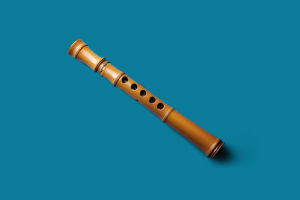Architecture photography is all about showcasing buildings, structures, and other human-made creations through the lens.
Here are 7 essential tips to help you elevate your architecture photography and capture your best shots of the built world!
1. Focus on Lighting
Lighting plays a crucial role in architecture photography because it can completely transform the way a building looks in your images. The direction of light, whether it's direct or diffused, can highlight textures, shapes, and intricate details that might be overlooked in flat or harsh lighting.
Try shooting during the golden hour—the first and last hour of sunlight to capture warm, soft light that enhances the structure’s features and creates dramatic shadows, making the photo more visually compelling. Understanding how natural light interacts with the building's materials will help you bring out its beauty.
2. Use a Wide-Angle Lens
A wide-angle lens is essential for architecture photography as it enables you to capture entire buildings or large sections in one shot, especially in tight spaces. Typically with focal lengths of 24mm or less, wide-angle lenses help encompass more of the scene in the frame. However, be mindful not to distort the perspective too much, especially the vertical lines that are characteristic of most buildings.
Keeping your camera level or using a tilt-shift lens allows you to avoid such distortions. Additionally, experiment with different wide-angle focal lengths to find the one that best suits the building's scale and your creative vision.
3. Tilt-Shift Lens: A Must-Have
A 24mm tilt-shift lens is a fantastic addition to any architecture photographer’s toolkit, as it offers the ability to control the perspective and avoid distortion in your photos. This lens allows you to keep vertical lines straight, even when photographing towering skyscrapers or high-rise buildings.
If you don't have access to a tilt-shift lens, you can correct perspective distortion in post-processing, but doing so may crop out portions of your image, losing valuable details. It's important to experiment with different focal lengths and lens choices to figure out the best fit for the specific architectural style you are capturing, whether it's contemporary or classical.
4. Explore Unique Angles and Perspectives
Looking for interesting angles and perspectives is crucial in architecture photography, as the right composition can transform an ordinary building into a visually dynamic image. Architecture is often geometric and symmetrical, which can be very visually appealing, but it’s important to step outside the box by searching for unique viewpoints.
Look for leading lines, repeating patterns, and interesting shapes that draw the viewer's eye into the photograph. Also, take into consideration the surrounding elements of the building, such as the street, natural surroundings, or even reflections, as these can add context and enrich the overall composition.
5. Capture the Details
Architecture is full of intricate patterns, textures, and materials. While photographing the whole building is important, close-up shots of details can add richness and tell a deeper story. A telephoto lens is ideal for these close-ups.
6. Be Patient
Patience is key in architecture photography. Sometimes, you’ll need to wait for the right light or to clear people from your shot. Take your time to ensure you’re capturing the perfect image that represents both the structure and your vision.
7. Stabilize Your Camera
When using longer shutter speeds to capture architectural details, stability is essential. A tripod or stable surface helps prevent blurry images, ensuring your shots are sharp and clear.
8. Post-Process for Perfection
Post-processing allows you to enhance your photos. Adjust exposure, contrast, and sharpness to highlight key details and set the right mood. Editing can bring out the true essence of the architecture and add a professional touch to your images.


